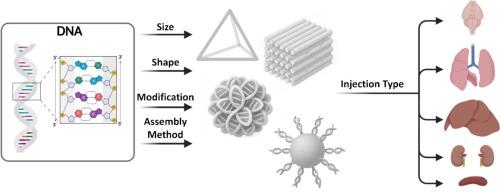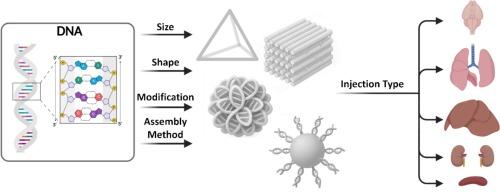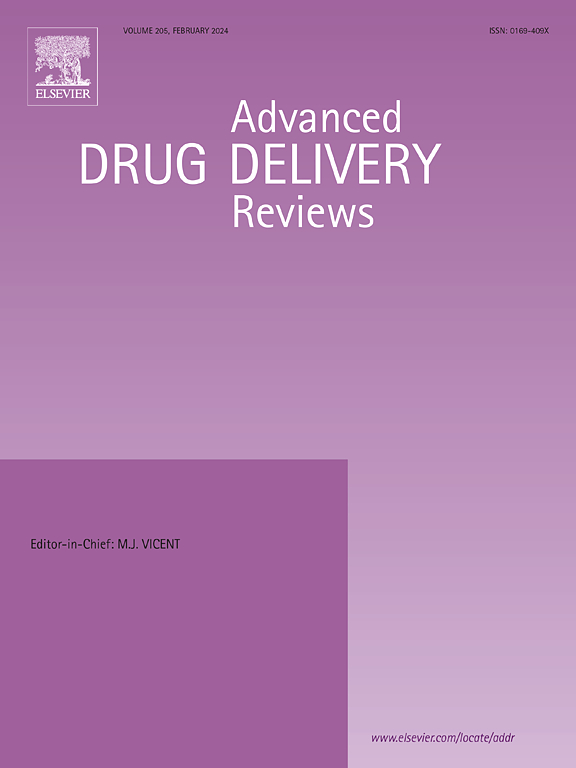Engineering in vivo behavior of DNA nanostructures toward organ-targeted drug delivery
IF 17.6
1区 医学
Q1 PHARMACOLOGY & PHARMACY
引用次数: 0
Abstract
DNA nanostructures have emerged as programmable and biocompatible platforms for drug delivery, offering precise control over size, shape, and surface properties. Recent advances have demonstrated their potential for organ-targeted delivery by utilizing ligand conjugation, structural engineering, and modulation of protein corona composition. Despite their promise, key challenges remain in predicting organ specificity and ensuring structural stability in vivo. This review provides a comprehensive overview of DNA nanostructures that have demonstrated organ-specific drug delivery, with emphasis on biodistribution profiles, in vivo targeting strategies, and the influence of physicochemical and biological barriers. We also highlight recent insights into corona-assisted targeting and administration route-dependent distribution, outlining strategies to enhance translational potential. Finally, we discuss critical challenges and future directions for clinical application of DNA nanostructures as targeted nanocarriers.


DNA纳米结构对器官靶向药物递送的体内工程行为
DNA纳米结构已经成为可编程和生物相容性的药物输送平台,提供对大小、形状和表面特性的精确控制。最近的进展表明,通过利用配体偶联、结构工程和蛋白质电晕组成的调节,它们具有器官靶向递送的潜力。尽管它们前景光明,但在预测器官特异性和确保体内结构稳定性方面仍存在关键挑战。这篇综述提供了DNA纳米结构在器官特异性药物传递方面的全面概述,重点是生物分布概况,体内靶向策略,以及物理化学和生物屏障的影响。我们还重点介绍了最近对冠状病毒辅助靶向和依赖于给药途径的分布的见解,概述了提高转化潜力的策略。最后,我们讨论了DNA纳米结构作为靶向纳米载体临床应用的关键挑战和未来方向。
本文章由计算机程序翻译,如有差异,请以英文原文为准。
求助全文
约1分钟内获得全文
求助全文
来源期刊
CiteScore
28.10
自引率
5.00%
发文量
294
审稿时长
15.1 weeks
期刊介绍:
The aim of the Journal is to provide a forum for the critical analysis of advanced drug and gene delivery systems and their applications in human and veterinary medicine. The Journal has a broad scope, covering the key issues for effective drug and gene delivery, from administration to site-specific delivery.
In general, the Journal publishes review articles in a Theme Issue format. Each Theme Issue provides a comprehensive and critical examination of current and emerging research on the design and development of advanced drug and gene delivery systems and their application to experimental and clinical therapeutics. The goal is to illustrate the pivotal role of a multidisciplinary approach to modern drug delivery, encompassing the application of sound biological and physicochemical principles to the engineering of drug delivery systems to meet the therapeutic need at hand. Importantly the Editorial Team of ADDR asks that the authors effectively window the extensive volume of literature, pick the important contributions and explain their importance, produce a forward looking identification of the challenges facing the field and produce a Conclusions section with expert recommendations to address the issues.

 求助内容:
求助内容: 应助结果提醒方式:
应助结果提醒方式:


